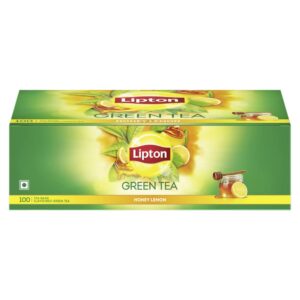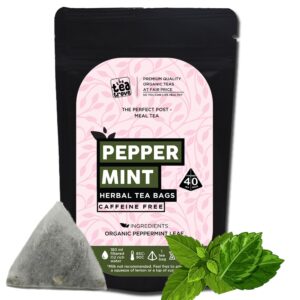In this post you will see the best healthy drinks in india.
1.Coconut Water
Coconut water, a refreshing and nutrient-rich beverage, comes from young, green coconuts. Unlike coconut milk, which is made by grating and pressing the flesh of mature coconuts, coconut water is naturally present inside the coconut cavity. Known for its hydrating properties and slightly sweet taste, it has gained popularity for its nutritional benefits and versatility as a beverage.
Composition and Nutritional Profile
Hydration and Electrolytes:
- Coconut water is 95% water, making it highly hydrating and a great option for quenching thirst.
- Rich in electrolytes like potassium, magnesium, calcium, and sodium, it helps restore the body’s electrolyte balance, especially after exercise or in hot weather.
Calories and Sugar Content:
- Relatively low in calories (approximately 45-60 calories per 240 ml) compared to other sugary drinks and sports beverages.
- Contains natural sugars, primarily glucose and fructose, that add a mildly sweet flavor, which varies slightly depending on the coconut’s maturity and origin.
Vitamins and Minerals:
- Abundant in potassium (about 600 mg per cup), which supports muscle function and helps regulate blood pressure.
- Contains small amounts of calcium, magnesium, and phosphorus, supporting bone health, energy production, and cellular function.
- Provides trace amounts of vitamins, including vitamin C, which acts as an antioxidant.
Amino Acids:
- Contains essential amino acids such as arginine, cysteine, and serine. These contribute to muscle repair and immune support.
Antioxidants:
- Coconut water contains antioxidants, such as cytokinins, that help combat oxidative stress and reduce cellular aging. Cytokinins have also been studied for their potential anti-aging and anti-cancer properties.
Health Benefits
Hydration and Replenishment:
- Coconut water is ideal for hydration due to its high water content and electrolyte balance. It can replenish fluids lost during exercise, helping prevent dehydration and maintain energy levels.
- Studies show that coconut water can aid in rehydration more effectively than plain water or some sports drinks.
Heart Health:
- The high potassium content in coconut water can help reduce blood pressure by balancing sodium levels in the body.
- Low in saturated fats and cholesterol, making it a heart-healthy choice for regular consumption in moderation.
Weight Management:
- Coconut water is low in calories compared to sugary sodas and juices, making it a healthier alternative for those looking to manage or reduce calorie intake.
- It has a satiating effect, which can reduce appetite and cravings for high-calorie snacks.
Blood Sugar Regulation:
- Although coconut water contains natural sugars, its low glycemic index means it doesn’t cause a rapid spike in blood sugar, making it a suitable drink for those managing blood sugar levels (in moderation).
Kidney Health:
- Coconut water has diuretic properties, meaning it helps increase urine production, which can support kidney function and help flush out toxins.
- Some studies suggest that regular consumption of coconut water may help reduce the risk of kidney stone formation due to its potassium and magnesium content.
Digestive Health:
- The natural enzymes in coconut water, like catalase, phosphatase, and dehydrogenase, aid digestion and nutrient absorption.
- Its mild diuretic effect can help prevent water retention and may relieve bloating.
Skin Health:
- Drinking coconut water helps keep the skin hydrated from within, promoting a healthy complexion.
- When applied topically, it can help reduce acne and inflammation due to its antibacterial and anti-inflammatory properties.
Taste and Flavor Profile
- Flavor: Coconut water has a naturally sweet, nutty, and slightly tropical flavor. It’s typically mild and refreshing, with a subtle coconut aftertaste.
- Aroma: Light and fragrant, giving it an inviting, tropical scent.
- Color: Clear or slightly cloudy, depending on the maturity of the coconut and environmental factors.
How to Use Coconut Water
As a Beverage:
- Coconut water is enjoyed straight from the coconut or served chilled as a hydrating drink. It’s especially popular after workouts or on hot days due to its natural electrolytes.
Smoothies and Juices:
- Adds a tropical touch and light sweetness when blended into smoothies or mixed with other juices.
- Pairs well with fruits like pineapple, mango, and berries, as well as leafy greens like spinach and kale.
Cooking and Baking:
- Used as a base for soups, curries, and sauces for a subtle coconut flavor.
- Acts as a substitute for water or other liquids in recipes like oatmeal, rice, and even baked goods, adding a hint of sweetness and extra nutrients.
Topical Skin Applications:
- Coconut water is used in skincare products or applied directly to the skin for its hydrating and anti-inflammatory properties.
- Can be dabbed on the face as a toner to refresh and moisturize the skin.
Types and Varieties
Young (Green) Coconut Water:
- Collected from young coconuts, typically 5-7 months old, when the water content is highest, and the flavor is naturally sweet.
- Preferred for drinking due to its mild taste and high water content.
Mature (Brown) Coconut Water:
- The water from mature coconuts is less sweet, with a slightly thicker texture and stronger coconut flavor. It’s usually less commonly consumed directly due to its more intense flavor.
Flavored Coconut Water:
- Sometimes coconut water is blended with natural fruit flavors like pineapple, mango, or passion fruit for added variety. It’s important to check for added sugars and preservatives in flavored varieties.
Canned and Bottled Coconut Water:
- Widely available in stores, though some may contain added sugars, preservatives, or pasteurization, which can affect the flavor and nutritional content.
Considerations
Storage:
- Fresh coconut water is best consumed soon after opening, as it can spoil quickly. Bottled and canned versions have a longer shelf life but may lose some nutritional benefits.
Dietary Suitability:
- Naturally vegan, gluten-free, and lactose-free, coconut water is suitable for most dietary needs. However, individuals with nut allergies should consult their healthcare provider before consuming, as sensitivities can vary.
Moderation:
- While coconut water is nutritious, it does contain natural sugars and calories, so it’s best consumed in moderation, especially for those monitoring blood sugar or calorie intake.
2.Green Tea
Green tea, a globally popular beverage, is made from the leaves of Camellia sinensis, which are quickly dried to prevent oxidation. Known for its light flavor and myriad health benefits, green tea has become a staple in wellness routines worldwide. It is consumed in various forms, including loose-leaf, bagged, powdered (like matcha), and even as an ingredient in supplements.
Composition and Nutritional Profile
Antioxidants:
- Green tea is rich in catechins, particularly epigallocatechin gallate (EGCG), which is a potent antioxidant that helps reduce oxidative stress, combats cell damage, and supports overall health.
- It contains polyphenols, which play a role in anti-inflammatory responses and may reduce the risk of chronic diseases.
Amino Acids:
- Contains L-theanine, an amino acid unique to green tea, known for its calming effects and ability to counteract caffeine’s stimulating effects, promoting mental relaxation without drowsiness.
Vitamins and Minerals:
- Provides small amounts of vitamins, including vitamin C, B vitamins (such as B2 and B6), and vitamin E, which support immune function and skin health.
- Contains trace minerals like magnesium, manganese, and potassium, although these are present in low quantities.
Caffeine:
- Green tea has a moderate caffeine content, generally ranging from 20-45 mg per cup, which is lower than coffee but enough to boost alertness and focus.
- Combined with L-theanine, green tea caffeine tends to provide a steadier, gentler energy boost without the crash often associated with coffee.
Flavonoids:
- These plant compounds offer additional antioxidant benefits and contribute to green tea’s potential to protect against cardiovascular diseases and promote general wellness.
Health Benefits
Heart Health:
- Studies show green tea may improve heart health by reducing LDL cholesterol levels and blood pressure.
- The catechins in green tea help improve blood vessel function and reduce plaque buildup, which can lower the risk of cardiovascular diseases.
Weight Management:
- Green tea’s catechins may increase fat oxidation and enhance metabolic rate, supporting weight management when combined with a balanced diet and exercise.
- Drinking green tea has been associated with modest weight loss and reductions in body fat over time, especially in the abdominal area.
Blood Sugar Regulation:
- Some studies suggest green tea may improve insulin sensitivity, helping to regulate blood sugar levels.
- It’s also associated with a reduced risk of type 2 diabetes due to its antioxidant content and ability to enhance glucose metabolism.
Mental Clarity and Focus:
- The combination of caffeine and L-theanine promotes alertness while reducing mental fatigue, making it an excellent choice for sustained focus without the jitteriness often caused by higher caffeine doses.
- L-theanine also promotes the production of alpha waves in the brain, associated with relaxation and mental clarity.
Anti-Inflammatory and Anti-Aging Properties:
- Green tea’s antioxidants, especially EGCG, have powerful anti-aging effects, protecting cells from damage and reducing signs of aging, such as wrinkles and skin dullness.
- Its anti-inflammatory properties also contribute to reduced risk factors for chronic conditions like arthritis and inflammatory skin conditions.
Cancer Prevention:
- While research is ongoing, green tea’s antioxidants are believed to reduce the risk of certain cancers, particularly in areas like breast, prostate, and colorectal cancers.
- Catechins have shown promise in laboratory studies for their potential to inhibit tumor growth and protect cells from DNA damage.
Liver Health:
- Green tea supports liver function by reducing fat buildup and inflammation, potentially lowering the risk of non-alcoholic fatty liver disease (NAFLD).
- Regular green tea consumption may promote detoxification and protect the liver from toxins.
Immune Support:
- Rich in antioxidants and certain polyphenols, green tea can bolster the immune system, helping the body fend off infections and inflammatory responses.
Taste and Flavor Profile
- Flavor: Light, earthy, and slightly grassy, with a hint of sweetness and some astringency, especially in certain varieties.
- Aroma: Fresh and vegetal, with subtle hints of seaweed or nuttiness depending on the type and preparation.
- Color: Typically ranges from pale green to a vibrant yellow-green, depending on brewing time and variety.
Types and Varieties of Green Tea
Sencha:
- A popular Japanese green tea, Sencha is steamed, resulting in a fresh, grassy flavor. It’s often slightly sweet with a delicate astringency.
Matcha:
- Made from finely ground green tea leaves, matcha is dissolved in water, creating a vibrant green drink with a creamy texture and an intense flavor. It contains higher antioxidants and caffeine compared to brewed green teas.
Gyokuro:
- This premium Japanese tea is grown in the shade, increasing its chlorophyll and amino acid content. It has a rich, sweet, umami flavor and is high in caffeine.
Longjing (Dragon Well):
- A Chinese green tea known for its flat, hand-roasted leaves, Longjing has a slightly nutty and sweet flavor with a smooth finish.
Genmaicha:
- A Japanese green tea mixed with roasted brown rice, offering a toasty, nutty flavor and a lighter caffeine profile.
Preparation Tips
Brewing Temperature:
- To prevent bitterness, green tea should be brewed at a lower temperature (75-85°C or 165-185°F). Boiling water can scorch the leaves, affecting the flavor.
Steeping Time:
- Typically requires a short steeping time, around 1-3 minutes, depending on the variety and personal preference. Longer steeping times may make the tea more bitter.
Amount of Leaves:
- About one teaspoon of loose-leaf tea per 8 oz (240 ml) of water is standard. For matcha, one-half to one teaspoon of powder is mixed directly into hot water.
Enhancements:
- Green tea pairs well with lemon, ginger, or a bit of honey. Lemon can also enhance the absorption of catechins and add a pleasant citrus note.
Considerations
Moderate Consumption:
- Drinking green tea in moderation (2-3 cups per day) is generally considered safe and beneficial. Excessive consumption, however, may lead to digestive upset or interfere with iron absorption.
Caffeine Sensitivity:
- Though it contains less caffeine than coffee, green tea can still affect those sensitive to caffeine. Choosing lower-caffeine varieties or decaffeinated options may help.
Interactions with Medications:
- Green tea can interact with certain medications, such as blood thinners. Those on medication should consult a healthcare provider before making green tea a regular part of their diet.
Quality:
- Choose high-quality, organic green tea to avoid pesticides and additives, especially when consuming matcha, which uses whole leaves.
Culinary Uses of Green Tea
Smoothies and Lattes:
- Matcha powder is popular in smoothies and lattes, offering a vibrant color and unique flavor.
Baking and Desserts:
- Green tea, especially matcha, is used in recipes for cakes, cookies, and ice creams, adding both a natural color and subtle flavor.
Savory Dishes:
- Green tea can be used as a poaching liquid or to infuse rice and broths, adding a delicate, earthy aroma.
3.Mint Tea
Mint tea, a popular herbal infusion, is made from fresh or dried mint leaves, often peppermint (Mentha piperita) or spearmint (Mentha spicata). Known for its refreshing, slightly sweet flavor and soothing properties, mint tea is enjoyed worldwide both hot and cold. It is caffeine-free, making it an excellent choice for relaxation and a refreshing way to support digestion.
Composition and Nutritional Profile
Mint tea contains various essential oils, antioxidants, and other compounds that contribute to its health benefits:
Menthol:
- A natural compound found in mint, menthol provides a cooling sensation and aroma, giving mint tea its characteristic refreshing taste and smell.
- Menthol also has mild analgesic properties, helping relieve headaches and muscle soreness.
Antioxidants:
- Mint tea is a source of antioxidants, including rosmarinic acid and flavonoids, which combat free radicals and protect cells from oxidative stress.
- These antioxidants are associated with benefits for the skin, immune system, and overall wellness.
Vitamins and Minerals:
- Though present in smaller quantities compared to whole foods, mint tea offers trace amounts of vitamins A, C, and B-complex vitamins, which can support immunity and energy.
- Contains minerals like calcium, magnesium, and potassium, though in minimal amounts, supporting cellular function.
Polyphenols and Flavonoids:
- Contains several polyphenols and flavonoids, which contribute to its anti-inflammatory and antimicrobial effects.
- These compounds are beneficial for gut health, may reduce bloating, and support immune response.
Tannins:
- Though in smaller quantities than black or green tea, the tannins in mint tea can add mild astringency, enhancing its refreshing taste and digestive benefits.
Health Benefits
Digestive Health:
- Mint tea is well-known for its digestive benefits. It helps relieve bloating, gas, and indigestion, making it an ideal choice after a meal.
- Menthol relaxes the muscles of the gastrointestinal tract, reducing spasms and promoting smoother digestion.
Respiratory Support:
- The menthol in mint tea acts as a natural decongestant, helping to open airways and relieve nasal congestion. It can soothe sore throats and ease breathing.
- Its antimicrobial properties may also help reduce symptoms associated with colds and mild respiratory infections.
Headache Relief:
- The cooling sensation of menthol can relieve headaches, particularly tension headaches, by soothing muscle tension and promoting relaxation.
- Drinking mint tea or inhaling its steam can provide quick relief from sinus headaches by easing pressure around the sinuses.
Stress Relief and Relaxation:
- Mint tea has calming effects that promote relaxation, reduce stress, and improve mood.
- The aroma of mint tea is also known to promote mental clarity and can be used as a mild remedy to reduce anxiety and stress.
Oral Health:
- Due to its antimicrobial properties, mint tea helps inhibit the growth of harmful bacteria in the mouth, freshening breath and supporting oral hygiene.
- Drinking mint tea regularly may help reduce the risk of gum disease and cavities.
Skin Health:
- The antioxidants in mint tea may protect the skin from environmental damage and aging.
- Drinking mint tea or using it as a facial rinse can help control acne and oil production.
Weight Management:
- The aroma of mint has been shown to help curb appetite and reduce cravings, potentially supporting weight management when combined with a balanced diet.
- As a calorie-free drink, mint tea is a good replacement for sugary drinks and can help with hydration.
Flavor and Aroma Profile
- Flavor: Mint tea has a clean, refreshing taste that is cool on the palate, with a slight sweetness and mild herbal undertones.
- Aroma: The aroma is invigorating and minty, with menthol’s distinct coolness that is both calming and uplifting.
- Color: Generally, mint tea has a pale green or light yellow color, depending on the variety of mint and steeping time.
Types and Varieties of Mint Tea
Peppermint Tea:
- Made from peppermint leaves, this type of mint tea has a strong, intense flavor with a high menthol content. It is more cooling and invigorating compared to other types.
Spearmint Tea:
- Spearmint tea has a milder, sweeter flavor than peppermint, with lower menthol content. It is often used in blends and provides a more delicate minty taste.
Blended Mint Teas:
- Mint tea is frequently blended with other herbs like chamomile, green tea, or lemon balm, each combination offering unique flavors and additional health benefits.
Moroccan Mint Tea:
- Traditionally made with green tea and spearmint, this tea is a popular drink in Morocco, where it is enjoyed sweetened. It has a distinctive sweet-mint flavor with earthy undertones.
Preparation Tips
Brewing Temperature:
- Mint tea should be brewed at around 85-95°C (185-200°F). Boiling water can diminish its delicate flavors.
Steeping Time:
- Steep mint tea for about 5-7 minutes. Longer steeping will yield a stronger flavor but may release more tannins, slightly increasing bitterness.
Fresh or Dried Mint Leaves:
- Fresh leaves yield a more vibrant flavor, while dried leaves have a concentrated taste. About 5-6 fresh leaves or 1 teaspoon of dried mint leaves per cup of water is standard.
Enhancements:
- Mint tea pairs well with honey, lemon, or ginger, enhancing its taste and health benefits. A touch of honey sweetens the tea naturally, and lemon adds a tangy freshness.
Considerations
Gastroesophageal Reflux Disease (GERD):
- People with GERD or acid reflux may experience worsened symptoms with mint tea, as mint can relax the lower esophageal sphincter and allow acid to flow back up the esophagus.
Pregnancy:
- While mint tea is generally safe, some individuals may be sensitive to it during pregnancy. Consulting a healthcare provider is advisable if experiencing any unusual effects.
Moderation:
- Drinking too much mint tea can cause mild side effects, such as dry mouth or slight irritation of the stomach lining, particularly if it’s consumed in excess.
Storage:
- For the best flavor, store dried mint leaves in an airtight container, away from light and moisture.
Culinary Uses of Mint Tea
Iced Mint Tea:
- Refreshing and hydrating, iced mint tea is a popular choice for warm weather. It pairs well with lemon or lime for extra zest.
Mocktails and Cocktails:
- Mint tea can be used as a base in mocktails and cocktails, adding a fresh, cooling note to drinks. It blends well with citrus, ginger, and berries.
Mint Tea Syrup:
- Boil mint tea with sugar to create a syrup that can be used in beverages or desserts for a minty twist.
Culinary Dishes:
- Mint tea can be used in marinades for meats or vegetables, adding a light herbal flavor. It can also be added to sauces or salad dressings for a unique twist.
4.Hot Chocolate
Hot chocolate is a rich, creamy beverage made from chocolate or cocoa powder, milk or water, and sweeteners. It has a warm, comforting flavor with a smooth, velvety texture, enjoyed as a classic indulgence worldwide. From its origins as a spiced drink in ancient Mesoamerica to the luxurious versions popular today, hot chocolate has evolved into a versatile treat that varies in style and preparation across cultures.
Ingredients and Nutritional Profile
Hot chocolate’s primary ingredients typically include:
Cocoa Powder or Chocolate:
- Pure cocoa powder is unsweetened and contains flavonoids, antioxidants, and minerals like magnesium, iron, and potassium, which can benefit heart health and provide a natural mood boost.
- Dark, milk, or white chocolate is often used for richer versions. Dark chocolate has more cocoa solids and less sugar, making it a healthier choice compared to milk or white chocolate.
Milk or Dairy Alternatives:
- Whole milk is traditionally used, lending a creamy texture and additional calcium, protein, and vitamins A and D.
- Non-dairy alternatives, like almond, oat, or coconut milk, are popular choices for lactose-free and vegan options, each adding a unique flavor and texture.
Sweeteners:
- Sugar, honey, or other sweeteners enhance the chocolate flavor and balance its natural bitterness.
- Alternatives like maple syrup or agave nectar are sometimes used for a more nuanced sweetness.
Optional Additions:
- Vanilla extract for depth of flavor.
- Cinnamon, nutmeg, or chili spices add warmth or a hint of heat.
- Whipped cream or marshmallows for a classic, indulgent topping.
- Liqueurs like Irish cream or peppermint schnapps for an adult twist.
Health Benefits
Hot chocolate provides various health benefits due to its primary ingredient, cocoa:
Antioxidants:
- Cocoa is rich in antioxidants, particularly flavonoids, which help neutralize free radicals, support heart health, and reduce inflammation.
Mood-Boosting:
- The presence of compounds like theobromine and phenylethylamine in cocoa can positively influence mood and even promote relaxation, as they release endorphins and serotonin.
Heart Health:
- Flavonoids in cocoa are known to improve blood circulation, reduce blood pressure, and support vascular health.
Cognitive Support:
- Studies suggest that flavonoids may support brain health by improving blood flow to the brain, potentially enhancing cognitive function over time.
Minerals and Vitamins:
- Cocoa contains minerals such as magnesium, iron, and zinc, essential for muscle function, immunity, and energy production.
Flavor and Texture Profile
- Flavor: The taste of hot chocolate is smooth, creamy, and deeply chocolatey. Depending on the chocolate or cocoa used, it can range from sweet to slightly bitter with undertones of caramel or vanilla.
- Texture: When prepared with milk, hot chocolate has a thick, velvety texture, whereas using water results in a lighter, more intense cocoa flavor. Variations like French hot chocolate (which uses melted chocolate) are even thicker and more luxurious.
Types of Hot Chocolate
Traditional Hot Chocolate:
- Made from cocoa powder, sugar, and milk, this version is usually lighter and less sweet than variations made with solid chocolate.
French Hot Chocolate (Chocolat Chaud):
- Known for its richness, this is made with melted dark chocolate and milk, sometimes with added cream, resulting in a thick, almost pudding-like consistency.
Italian Hot Chocolate (Cioccolata Calda):
- A rich and very thick version often thickened with cornstarch, creating a custard-like consistency. It’s so dense that it can be eaten with a spoon.
Mexican Hot Chocolate (Champurrado):
- Traditionally made with Mexican chocolate, water or milk, cinnamon, and sometimes chili for added spice. This version can also include masa harina (corn flour) to thicken it and give it a unique texture and flavor.
Spiced Hot Chocolate:
- Popular in many cultures, this hot chocolate is made with additional spices like cinnamon, nutmeg, cloves, or even chili powder, offering a warming, spiced twist.
Preparation Tips
Choosing the Chocolate:
- For a more indulgent drink, choose high-quality dark chocolate with at least 60-70% cocoa. Unsweetened cocoa powder can also be used for a classic version.
Milk Alternatives:
- Whole milk adds the richest texture, but for a lighter drink, use skim milk or a dairy alternative. Oat and almond milk offer a creamy consistency that pairs well with chocolate.
Sweetening:
- Adjust the sweetness to taste, keeping in mind that dark chocolate requires a bit more sugar than milk chocolate to achieve the desired balance.
Enhanced Flavors:
- Adding a pinch of sea salt brings out the chocolate’s richness, while vanilla extract or a hint of cinnamon adds depth.
Frothing:
- Frothing or whisking the milk and chocolate together adds air, making the drink lighter and smoother in texture.
Popular Add-Ins and Toppings
Whipped Cream:
- A dollop of whipped cream adds a light, airy contrast to the rich, warm drink and enhances the indulgent feel of hot chocolate.
Marshmallows:
- Small or large, marshmallows slowly melt into the drink, adding a sweet, gooey layer on top.
Cinnamon and Nutmeg:
- Sprinkling a bit of cinnamon or nutmeg adds warmth and spice.
Peppermint or Mint Leaves:
- Peppermint extract or crushed candy canes add a refreshing flavor twist, especially popular during the winter season.
Chocolate Shavings or Cocoa Powder:
- Adding a sprinkle of chocolate shavings or cocoa powder on top intensifies the chocolate flavor and makes the drink visually appealing.
Variations for Different Preferences
Vegan Hot Chocolate:
- Replace dairy milk with plant-based alternatives like almond, soy, or oat milk, and choose dairy-free chocolate or cocoa powder.
Low-Calorie Hot Chocolate:
- Use unsweetened almond milk, reduce the sugar, and use cocoa powder rather than chocolate for a lighter option.
Keto-Friendly Hot Chocolate:
- Use unsweetened almond or coconut milk, sugar-free sweeteners like stevia, and high-cocoa dark chocolate or cocoa powder.
Historical Background
Hot chocolate dates back to the ancient Mayans, who created a bitter, spiced chocolate drink mixed with water and chili peppers. The Aztecs later adopted this beverage, considering it a luxury and an offering to the gods. When Spanish explorers brought cocoa beans to Europe in the 16th century, hot chocolate became popular across Europe, where sugar and milk were added, transforming it into the sweeter drink enjoyed today.
5.Coffee
Coffee is a globally beloved beverage made from roasted coffee beans, the seeds of the Coffea plant. Known for its energizing properties, complex flavor profile, and versatility, coffee has grown from a simple morning ritual into a cultural experience. Its taste and characteristics can vary widely, depending on bean origin, roast level, brewing method, and personal preparation preferences.
Origins and Varieties of Coffee
Origins:
- Coffee plants are primarily grown in regions along the “Coffee Belt,” which spans Central and South America, Africa, the Middle East, and parts of Asia. Some of the most renowned coffee-producing countries include Brazil, Colombia, Ethiopia, and Vietnam, each with unique climate conditions that impart distinct flavors.
Varieties:
- Arabica: Known for its smooth, complex flavors, arabica beans comprise roughly 60-70% of global coffee production. They’re generally sweeter with floral and fruity notes and less bitter than robusta.
- Robusta: These beans are higher in caffeine and have a stronger, more bitter taste, often described as earthy or nutty. Robusta is widely used in espresso blends for added depth and crema.
Hybrid Varieties:
- Crosses between arabica and robusta, or other indigenous species, have led to varieties like Typica, Bourbon, Geisha, and SL28, each known for unique flavors. For example, Geisha beans, originating from Ethiopia, have gained fame for their floral, tea-like notes.
Flavor Profile and Aroma
The flavor profile of coffee is influenced by several factors, including origin, altitude, processing, and roast level. The taste can be described using five main categories:
- Acidity: A bright, tangy sensation often found in high-altitude arabica beans, acidity can range from crisp and refreshing to soft and muted, depending on origin and processing.
- Body: Refers to the coffee’s thickness or mouthfeel. A coffee with a heavy body is rich and robust, while a light-bodied coffee is often clean and crisp.
- Sweetness: Natural sweetness is more prevalent in lighter roasts and high-quality beans, balanced by acidity and bitterness.
- Bitterness: Dark roasts and robusta beans tend to have more bitterness, which can be pleasant or overpowering depending on taste.
- Flavor Notes: Coffee can have subtle notes of fruit, chocolate, nut, spice, floral, or earthy undertones. Each coffee region has signature flavor characteristics: Ethiopian coffees are often fruity or floral, while Colombian coffees are known for their balanced, nutty, and chocolate notes.
The Coffee Bean Process: From Plant to Brew
Harvesting: Coffee cherries are typically handpicked when ripe. The cherries are then processed to remove the beans inside.
- Washed Process: Beans are fermented and washed, resulting in a cleaner, brighter flavor.
- Natural Process: Beans are dried with the cherry intact, which imparts fruity, sweeter flavors.
- Honey Process: A mix between washed and natural, honey processing allows some of the fruit’s mucilage to remain on the bean, enhancing sweetness.
Roasting:
- The roasting process develops the bean’s flavor by caramelizing sugars, breaking down acids, and releasing oils. Roasts are generally classified as:
- Light Roast: Bright acidity, higher in caffeine, and floral or fruity notes.
- Medium Roast: Balanced acidity, body, and flavor; less intense than a light roast.
- Dark Roast: Lower acidity, more bitterness, and notes of chocolate or smoky flavors.
- The roasting process develops the bean’s flavor by caramelizing sugars, breaking down acids, and releasing oils. Roasts are generally classified as:
Grinding:
- The grind size depends on the brewing method: coarser for French press and cold brew, medium for drip coffee, and fine for espresso. Grind size impacts extraction time, which affects flavor.
Brewing:
- Different brewing methods bring out different aspects of the coffee’s profile:
- Espresso: Concentrated and intense, espresso is made by forcing hot water through finely ground coffee under pressure. It has a rich body and crema.
- Drip Coffee: Using a drip coffee maker, this method is convenient and produces a balanced, clean cup.
- French Press: Steeps coarse grounds in hot water for a full-bodied, bold flavor.
- Pour Over: Controlled, even extraction brings out nuanced flavors and aromas.
- Cold Brew: Coarse grounds steeped in cold water for an extended period, creating a smooth, mellow, low-acid beverage.
- Different brewing methods bring out different aspects of the coffee’s profile:
Types of Coffee Beverages
Espresso-Based Drinks:
- Espresso: A concentrated shot of coffee with a bold, complex flavor.
- Americano: Espresso diluted with hot water, providing a lighter body similar to drip coffee.
- Cappuccino: Espresso topped with equal parts steamed milk and foam, resulting in a creamy, balanced drink.
- Latte: Espresso with more steamed milk and a small amount of foam, creating a smooth and mellow drink.
- Macchiato: Espresso with a dollop of foam or steamed milk, creating a bold, creamy texture.
- Mocha: Espresso with steamed milk and chocolate, often topped with whipped cream for added sweetness.
Cold and Specialty Coffees:
- Cold Brew: Coffee brewed with cold water for an extended time, yielding a smooth, low-acidic flavor.
- Iced Coffee: Brewed hot, then chilled and served over ice; it is lighter and more acidic than cold brew.
- Nitro Coffee: Cold brew infused with nitrogen for a creamy, frothy texture without added milk.
- Affogato: A scoop of vanilla ice cream topped with a shot of hot espresso.
Health Benefits and Considerations
Energy and Cognitive Function:
- Coffee’s caffeine content helps improve focus, energy, and mental alertness, making it a popular choice for enhancing productivity and physical performance.
Antioxidants:
- Coffee is rich in antioxidants, including chlorogenic acid, which may help reduce inflammation, support heart health, and protect cells against oxidative stress.
Metabolism and Weight Management:
- Studies suggest that caffeine may boost metabolism and aid in fat oxidation, potentially supporting weight management goals when consumed in moderation.
Mood Enhancement:
- Caffeine stimulates the release of dopamine and serotonin, often resulting in improved mood and well-being.
Risks:
- Excessive coffee intake can cause jitteriness, insomnia, digestive discomfort, and increased heart rate. Caffeine sensitivity varies, so moderation is essential.
Coffee Culture and Global Influence
Middle Eastern and Turkish Coffee:
- Thick, unfiltered coffee served with sugar, often in small cups. It’s a cultural symbol of hospitality and social bonding in Middle Eastern societies.
Italian Espresso Culture:
- Italy is renowned for its espresso culture, where coffee is sipped quickly at the bar. Italians enjoy espresso plain or as the base for drinks like cappuccinos and lattes.
Japanese Coffee:
- Japan has a sophisticated coffee culture, with popular pour-over methods and high-quality coffee establishments. The Japanese also enjoy cold brew coffee and canned coffee.
Latin American Coffee Culture:
- In Colombia, Brazil, and other coffee-producing nations, coffee holds cultural and economic importance. Local traditions include strong, sweetened coffee and communal gatherings around coffee preparation.
Specialty Coffee Movement:
- Originating in the 20th century, specialty coffee focuses on quality, single-origin beans, traceability, and innovative brewing techniques to bring out the bean’s full potential. This movement has led to a coffee renaissance, especially in Western countries.

Disclaimer –
We present the products to you after doing research, but still it is possible that your experience with those products may not be good.
We can hope that your experience goes well, but we can’t make promises.
Note –
Many times there are many versions of the same product, companies do this to meet the different needs of the customers. If you go to see it yourself, you may get confused, so if you want to see our recommended product, then click on its photo.
For extra info. Contact Us
Almost every time it happens that the same thing is available at different prices on different websites and marketplaces, some products are available at a good price at one place but then it cannot be trusted whether they are genuine or fraud.
If you do not want to get into such trouble and want to buy good products at the right price, then Contact Us.
If you want to buy any of these then click on them.









